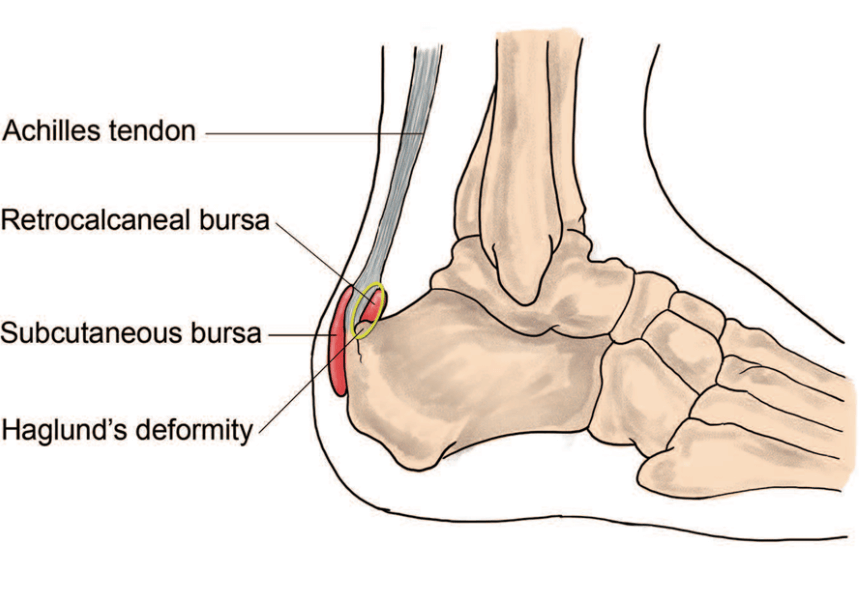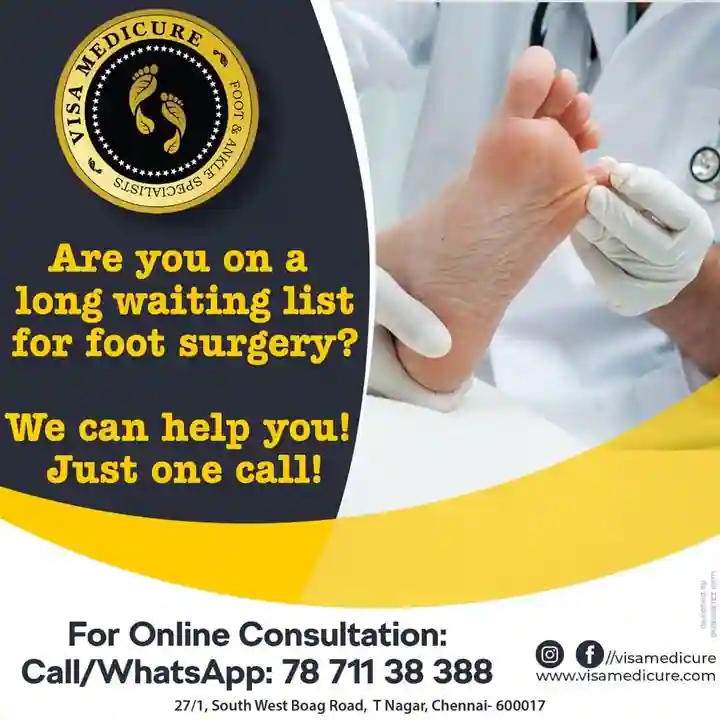Retrocalcaneal bursitis, also known as Achilles bursitis, is a condition characterized by inflammation of the bursa located at the back of the heel where the Achilles tendon inserts into the calcaneus (heel bone). The bursa is a small fluid-filled sac that acts as a cushion between the tendon and the bone, reducing friction during movement.
Causes: Retrocalcaneal bursitis is commonly caused by repetitive stress or overuse of the Achilles tendon, leading to irritation and inflammation of the bursa. Some factors that can contribute to the development of this condition include:
- Overuse or repetitive activities: Running, jumping, or activities that involve repetitive ankle movements can put strain on the Achilles tendon and bursa, leading to inflammation.
- Poor footwear: Wearing ill-fitting shoes or shoes without proper cushioning and support can increase the risk of bursitis.
- Tight calf muscles: Tightness in the calf muscles can put extra stress on the Achilles tendon, leading to bursitis.
- Foot deformities: Conditions like flat feet or high arches can alter the mechanics of the foot and increase the risk of bursitis.
- Trauma: Direct injury to the back of the heel can cause inflammation of the bursa.
Symptoms: The most common symptoms of retrocalcaneal bursitis include:
- Pain and tenderness at the back of the heel, particularly with pressure or when wearing tight shoes.
- Swelling and redness in the area.
- Limited range of motion in the ankle.
- Discomfort or pain while walking, running, or during other activities that involve ankle movement.
Treatment: The treatment for retrocalcaneal bursitis aims to relieve pain, reduce inflammation, and address the underlying causes. Here are some common treatment options:
- Rest and activity modification: Avoid activities that worsen the symptoms and give the inflamed bursa time to heal.
- Ice therapy: Applying ice packs to the affected area can help reduce pain and inflammation. Apply ice for 15-20 minutes several times a day.
- Pain relief medication: Nonsteroidal anti-inflammatory drugs (NSAIDs) may be recommended to reduce pain and inflammation.
- Physical therapy: Specific exercises and stretches can help improve flexibility, strengthen the surrounding muscles, and promote healing.
- Shoe modifications: Wearing well-fitting shoes with proper cushioning and support can alleviate pressure on the bursa.
- Orthotic devices: Custom-made shoe inserts or orthotic devices can provide additional support and correct any foot abnormalities.
- Corticosteroid injections: In some cases, a corticosteroid injection may be administered to reduce inflammation and alleviate symptoms.
- Surgical intervention: If conservative measures fail to provide relief, surgery may be considered to remove the inflamed bursa or correct any underlying foot deformities.
It’s important to consult a healthcare professional for an accurate diagnosis and appropriate treatment plan tailored to your specific condition.



